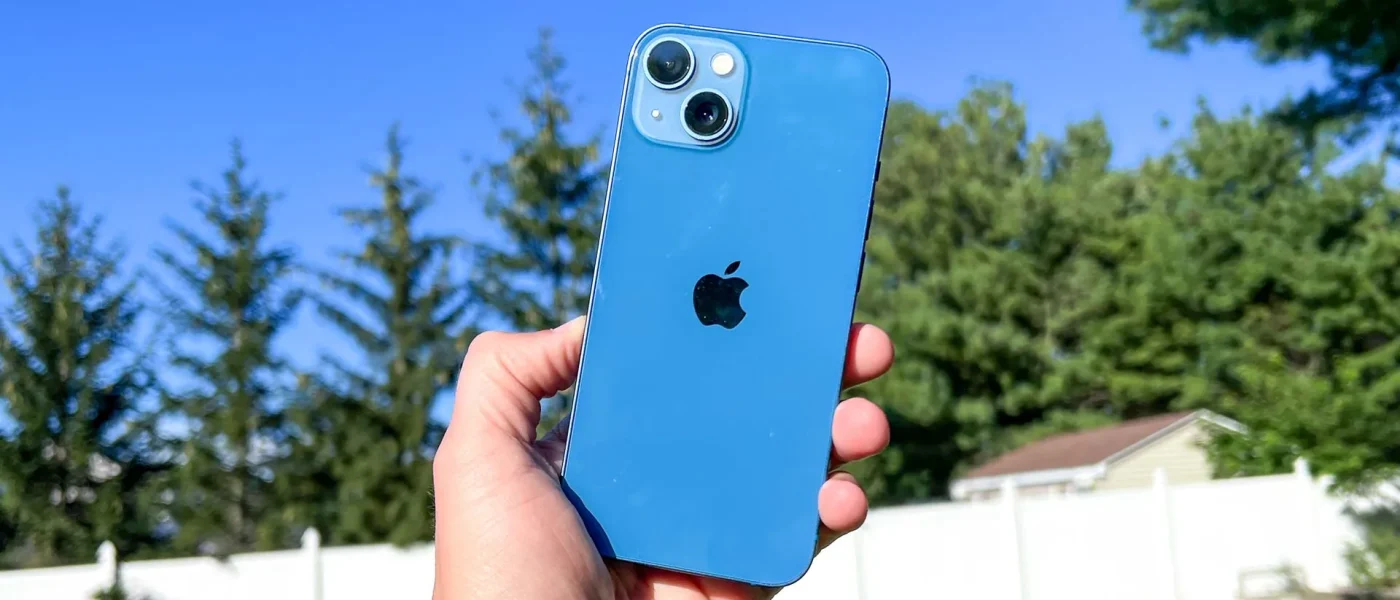eSIM
How Many eSIM Can Be Used In iPhone 13?
How Many eSIM Can Be Used In iPhone 13?
Answer: The iPhone 13 allows two eSIMs to be active at the same time. But before you run out and grab an eSIM there is some important information you need to know which we’ll cover in this article.
What Is eSIM Technology, Exactly?
Unlike traditional physical SIM cards that you insert into your mobile phone, eSIMs are hardwired into mobile devices.
This means that instead of going out and buying a new SIM for traveling, you now just download it onto your phone.
The benefits of using eSIMs on iPhones are numerous:
• Flexibility to switch between carriers without changing physical SIM cards
• Ability to have multiple phone numbers on one device
• Simplified process for activating local data plans when traveling
• Reduced environmental impact by eliminating plastic SIM cards
As eSIM adoption continues to grow, understanding how to leverage this technology on your iPhone can significantly enhance your mobile experience.
iPhone Models Compatible with eSIM
Apple has been at the forefront of eSIM adoption, incorporating this technology into its devices since 2018. Here’s a list of iPhone models that support eSIM functionality:
• iPhone XS and XS Max
• iPhone XR
• iPhone 11, 11 Pro, and 11 Pro Max
• iPhone SE (2nd generation and later)
• iPhone 12, 12 Mini, 12 Pro, and 12 Pro Max
• iPhone 13, 13 Mini, 13 Pro, and 13 Pro Max
• iPhone 14, 14 Plus, 14 Pro, and 14 Pro Max
While all these models support eSIM, there are some differences in capabilities between them.
For example, newer models like the iPhone 13 and 14 series offer dual eSIM support, allowing two eSIMs to be active simultaneously without a physical SIM card.
How Many eSIMs Can an iPhone Support?
The eSIM capacity of iPhones has evolved over time, with newer models offering increased flexibility. Currently, most compatible iPhones can store up to eight or more eSIM profiles.
However, the number of simultaneously active eSIMs varies depending on the model.
Single Active eSIM Models
Older eSIM-compatible iPhones, such as the XS, XR, and 11 series, support one active eSIM alongside a physical SIM card. This dual SIM functionality allows users to have two active lines, but only one can be an eSIM.
Dual Active eSIM Models
Starting with the iPhone 13 series, Apple introduced support for dual active eSIMs. This means these devices can have two eSIMs active simultaneously, in addition to storing multiple inactive eSIM profiles. The iPhone 14 series (except for U.S. models) takes this further by eliminating the physical SIM slot entirely, relying solely on eSIM technology.
Setting Up Multiple eSIMs on iPhone
Here are the quick step-by-steps on how to set up your eSIM.
Step-by-Step Guide to Add eSIMs
- Go to Settings: Open the Settings app on your iPhone.
- Select Cellular: Tap on “Cellular” or “Mobile Data.”
- Add Cellular Plan: Choose “Add Cellular Plan.”
- Scan or Enter Details:
- Scan QR Code: If your carrier provided a QR code, use your iPhone’s camera to scan it.
- Enter Details Manually: If you don’t have a QR code, select “Enter Details Manually” and input the required information.
- Follow On-Screen Instructions: Complete the activation process by following the prompts that appear on your screen.
- Repeat for Additional eSIMs: You can repeat the process to add more eSIMs as needed.
Organizing Your eSIM Profiles
To keep your eSIM profiles organized, it’s essential to label them appropriately:
- Go back to Settings > Cellular.
- Tap on the plan name you want to label.
- Choose a descriptive label like “Work,” “Personal,” or “Travel” for easy identification.
Switching Between Active eSIMs
Switching between active eSIMs is simple:
- Go to Settings: Open the Settings app again.
- Select Cellular: Tap on “Cellular.”
- Choose Your Plan: Tap the plan you want to use.
- Turn On This Line: Select “Turn On This Line” to activate it.
Using Dual SIM Functionality
Dual SIM functionality on iPhones offers a range of possibilities for managing multiple phone numbers. You can combine a physical SIM with an eSIM or use two eSIMs simultaneously (on supported models).
This feature is particularly useful in several scenarios:
• Separating work and personal lines on one device
• Using a local SIM while traveling without removing your home SIM
• Maintaining two numbers in different area codes
• Testing a new carrier without giving up your current plan
To set up dual SIM:
- Ensure both SIMs are activated
- Go to Settings > Cellular
- Tap “Set Up Cellular Data Switching” to choose which line to use for data
- For calls and messages, you can select a default line or choose each time
Benefits of Multiple eSIMs on iPhone
The ability to store and use multiple eSIMs on your iPhone offers numerous advantages:
Flexibility for Travelers
International travelers can benefit significantly from multiple eSIMs. Instead of purchasing expensive roaming plans or hunting for local SIM cards, you can simply activate a local eSIM before your trip. This allows you to enjoy local rates while keeping your home number accessible.
Separating Work and Personal Lines
For professionals, having separate work and personal numbers on one device helps maintain a healthy work-life balance. With multiple eSIMs, you can easily switch between profiles or use both simultaneously, ensuring you’re always reachable on the right number.
Easy Switching Between Carriers or Plans
eSIM technology makes it simple to switch between carriers or try new plans. You can store multiple eSIMs from different providers and activate the one that best suits your needs at any given time. This flexibility allows you to take advantage of promotions or better coverage without the hassle of changing physical SIM cards.
Reduced Need for Physical SIM Cards
By embracing eSIM technology, you reduce the need for physical SIM cards. This not only simplifies the process of changing carriers or traveling but also contributes to reducing electronic waste.
Managing eSIM Data and Settings
Effectively managing your eSIM data and settings is crucial for a smooth experience with multiple profiles. Here’s how to optimize your setup:
Selecting Default Lines
You can set default lines for calls, texts, and data:
- Go to Settings > Cellular
- Tap “Default Voice Line” or “Default Data Line”
- Choose your preferred line for each service
Configuring Cellular Data Settings
To manage cellular data usage:
- Go to Settings > Cellular
- Tap each plan to view and adjust data settings
- Enable or disable data roaming as needed
- Set data limits or warnings to avoid overage charges
Using Wi-Fi Calling with Multiple eSIMs
Wi-Fi calling can be a valuable feature, especially when cellular signal is weak:
- Go to Settings > Cellular > Wi-Fi Calling
- Toggle on “Wi-Fi Calling on This iPhone”
- Repeat for each eSIM profile if desired
Remember, not all carriers support Wi-Fi calling, so check with your provider if you don’t see this option.
Troubleshooting and FAQs
While using multiple eSIMs is generally straightforward, you might encounter some issues. Here are some common problems and their solutions:
eSIM Activation Failures
If you’re having trouble activating an eSIM:
• Ensure you have a stable internet connection
• Verify that your carrier supports eSIM activation
• Try restarting your iPhone and attempting activation again
Carrier Support for eSIM Technology
Not all carriers support eSIM technology. Before attempting to use an eSIM, check with your carrier to ensure they offer this service. Support is growing, but it’s not universal yet.
Compatibility Concerns
Some features may not be available when using dual SIM functionality. For example, 5G might only work with one line at a time on certain models. Check Apple’s support documentation for the latest information on feature compatibility.
Future of eSIM Technology on iPhones
As eSIM technology continues to evolve, we can expect to see further advancements in how iPhones utilize this feature:
Increased eSIM Storage and Activation
Future iPhone models may support storing even more eSIM profiles and potentially allow for more simultaneously active eSIMs. This could further enhance flexibility for users who need to manage multiple numbers or frequently switch between carriers.
Phasing Out of Physical SIM Slots
Apple has already begun the transition away from physical SIM cards with the iPhone 14 series in the U.S. market. It’s likely that this trend will continue, with future models potentially relying entirely on eSIM technology across all markets.
This shift could lead to slimmer device designs and improved water resistance, as well as simplifying the manufacturing and distribution process for smartphones.
As eSIM technology becomes more prevalent, we can also expect to see more innovative uses for multiple cellular connections on a single device. This could include advanced network aggregation for improved speeds and reliability, or new features that leverage multiple carrier connections simultaneously.







